The SleepHub offers one pretty great proposition: it’s an acoustic device that helps you get better quality sleep. As someone who is notoriously bad at sleeping, I jumped at the opportunity to review it.
I think I was a little too optimistic, however (after all, I am desperate to get a good night’s sleep). But I don’t dislike the SleepHub, I just want a little bit more for $1,500. Let’s start at the top.
The SleepHub
The SleepHub is a hub with two speakers made by the company of the same name. The idea is to improve your sleep. According to the company, the SleepHub will help you fix sleep issues, not mask them; help you get back to sleep quicker if you do wake up; that using the SleepHub you’ll drift to sleep easier and quicker; when you wake, you’ll feel more refreshed; during the night you’ll wake less frequently; and you’ll feel more energised throughout the day.
How does it work?
SleepHub wants you to restore natural sleep patterns and optimise the sleep you do get. Here’s what they say:
“Using neuroscience and sound technology, SleepHub trains the brain to sleep optimally and is backed by over 10 years of scientific research, development and trials.”
Check out this YouTube vid if you want to dive into this a little more:
Setting up the SleepHub
It’s pretty straight forward, you just need two bedside tables (which I do not have). Luckily, I have a sort-of bench moat around my mattress for the second speaker. Speaker one goes to your left, speaker two goes to your right. The SleepHub sits on the bedside table with the shortest speaker cable (one is 2m and the other 5m).
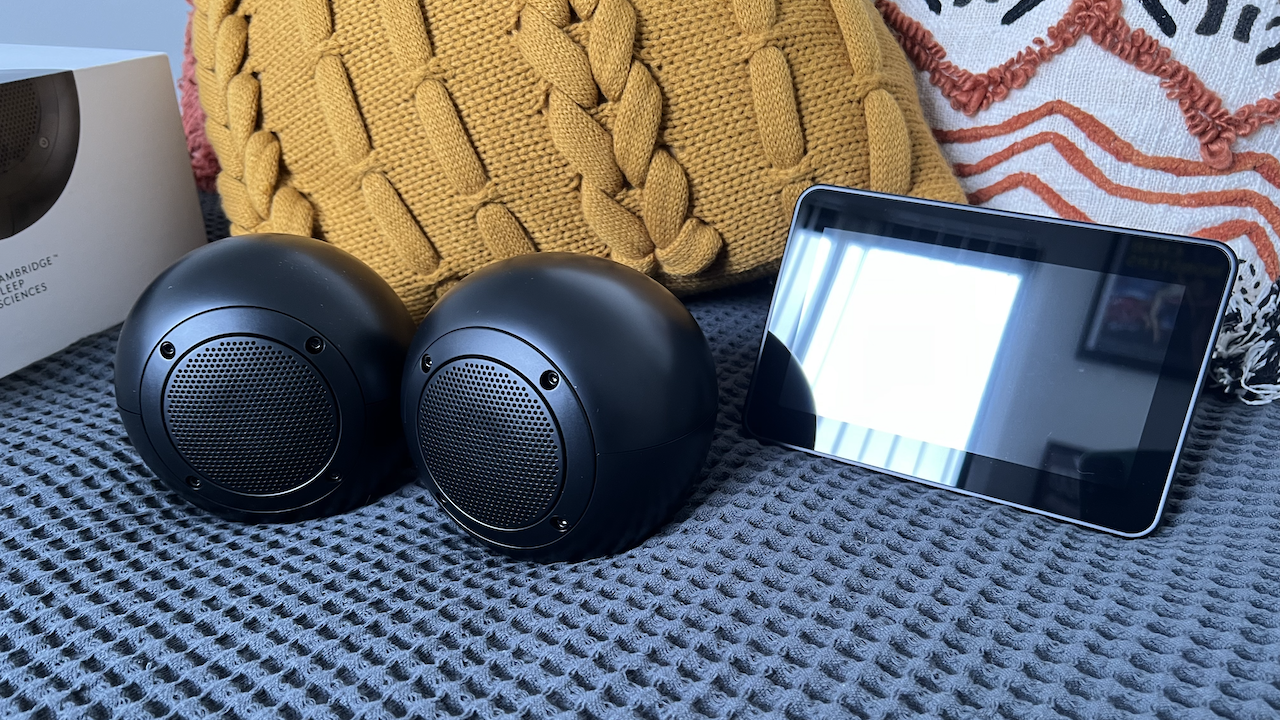
The back of the SleepHub is quite bulky.
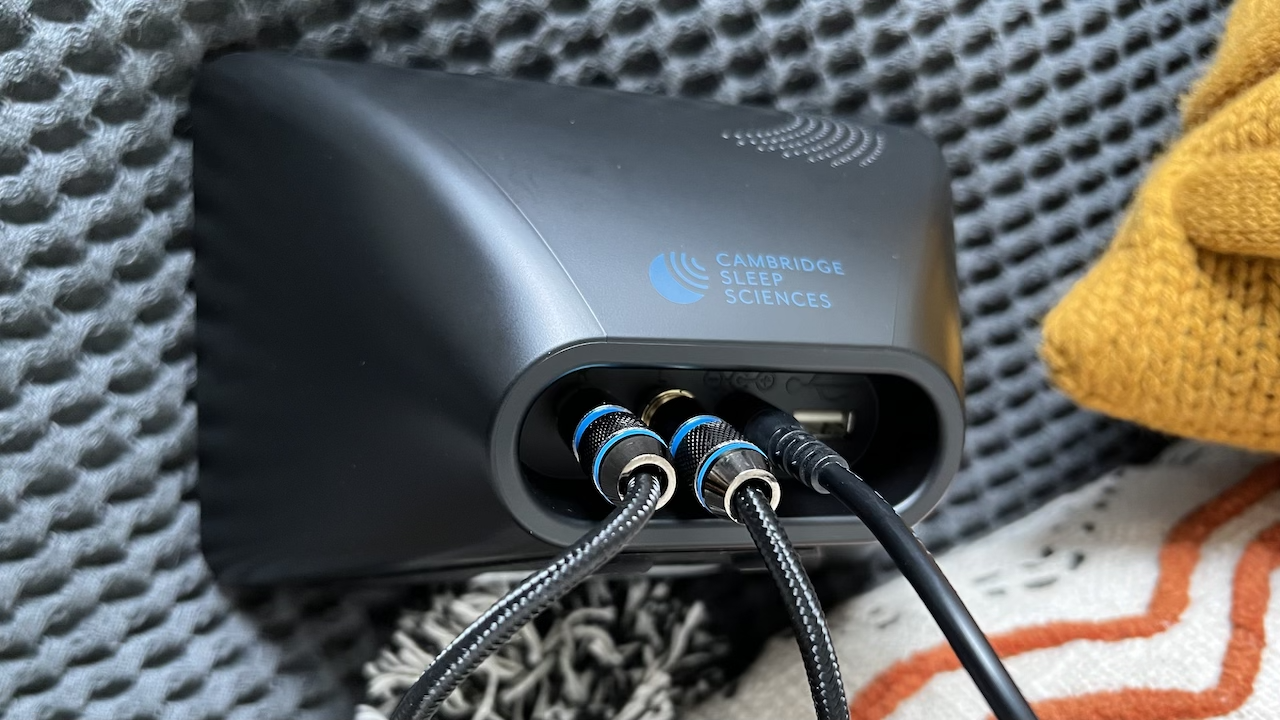
Cables galore.
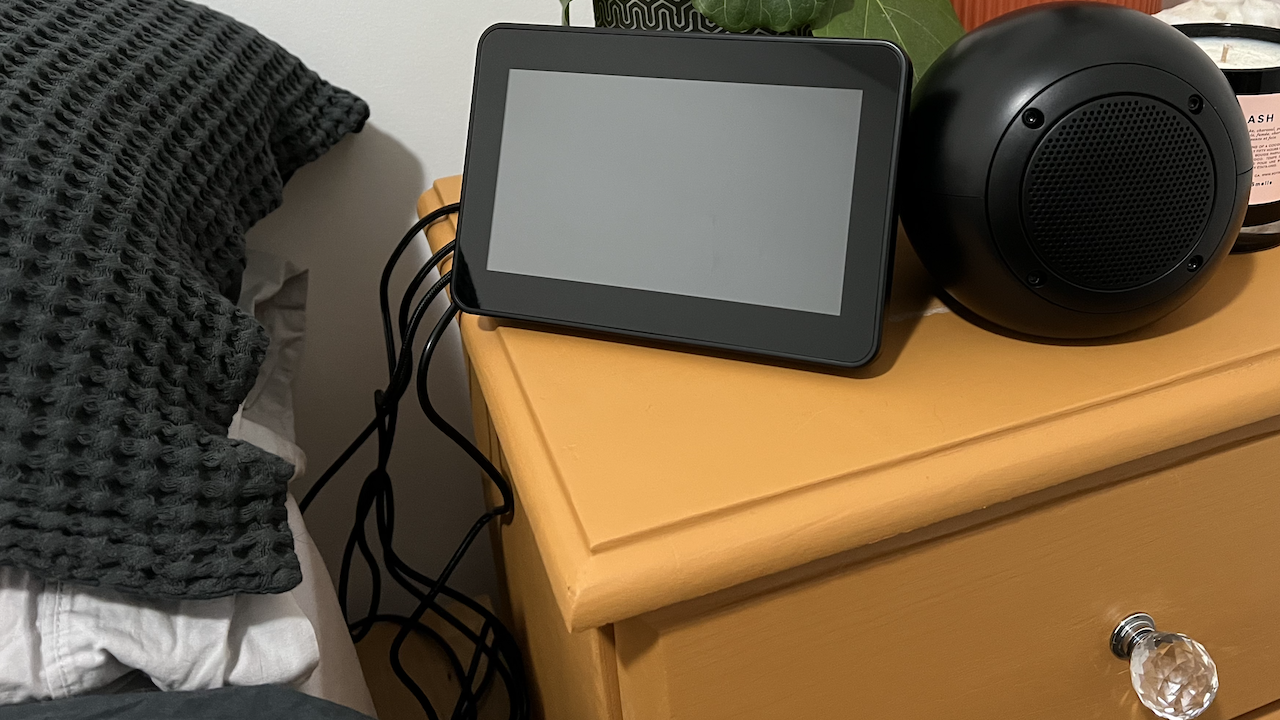
At least there’s only one cable on the other side.

Upon powering up the SleepHub, you connect it to Wi-Fi. As straight forward as you can imagine. Once this is all done, you can choose your sleeping mode.
Using the SleepHub
The SleepHub screen is blank – it sits off until activated by a tap. The first thing you have to do is ‘Slide to Sleep’. This will bring up the home screen. Drilling into ‘Sleep Mode’ will bring up the fourth pic.

There’s four Sleep Modes. Deep Sleep is an 8-hour program that includes an 18 minute wakeup cycle and a fixed alarm time. Easy Sleep is for when you don’t have a full 8 hours. You pre-set how long you have and the SleepHub will tailor its movements around that. Fall Asleep is a 2-hour program that guides you to fall asleep. It doesn’t have an auto alarm like the other two, but you can set one. Lastly, Power Nap. Power Nap gives you a choice of 30, 45 and 60 minute programs, with an optional wakeup alarm.
The Settings screen allows you to select your language, set date and time, control the volume, etc.
Now, to choose your soundscape. Choices are: rain, ocean, stream, wind, train, white noise, pink noise and brown noise.

As a child, laying in bed I’d hear the sound of a freight train shooting up the Blue Mountains valley once or twice a night. It wasn’t overly loud, but it was somehow peaceful. Seeing the ‘train’ sound on the SleepHub I was thrilled. But unfortunately, this is the constant sound of a train moving along the tracks, not a speedy freight train doing its thing in the distance. This sound was intolerable after 10 or-so minutes. So I moved on to the ocean sound. Probably a little too much information, but this sound sent me out of bed and to the bathroom more than usual before bed. White, pink and brown noise hurt my ears.
Unfortunately, throughout my time with the SleepHub, I am yet to settle on a sound I actually enjoy. Wind is the most tolerable, as it’s the most passive sound. Also when using the SleepHub, my cat won’t sleep on the bed. Which is bizarre, because I’ve always played loud, heavy music around the apartment and he’s seemingly had no issue with the noise.
As a very heavy sleeper once I’m asleep, I didn’t wake up to the SleepHub alarm on a handful of occasions. The idea is to gradually wake up, and peacefully, not be startled awake to the type of alarm I use every day. SleepHub is definitely onto something here, the days I did wake to the alarm, I was in a far better mood than when I didn’t.
It took some getting used to having sounds play to fall asleep, ones that aren’t music. But, that won’t necessarily be your experience – I know a lot of people will love the soundscape options.
Google Nest Hub
Prior to the SleepHub, I used the Google Nest Hub. Unlike the SleepHub, the Nest Hub offers sleep sensing, which is a way to help understand and improve your sleep. Every day (since March 2021, actually), the first thing I check is how long I’ve slept for, as the Nest Hub provides a summary of your sleep. It tells you the sleep duration, the quality of that sleep, whether you coughed or snored, your respiratory rate – it makes it easier to understand what’s impacting your sleep. It even analyses lighting and temperature in your room. It has a pretty shitty speaker (when we’re talking speaker quality) within the hub, but it is better than playing rain sounds through your phone.
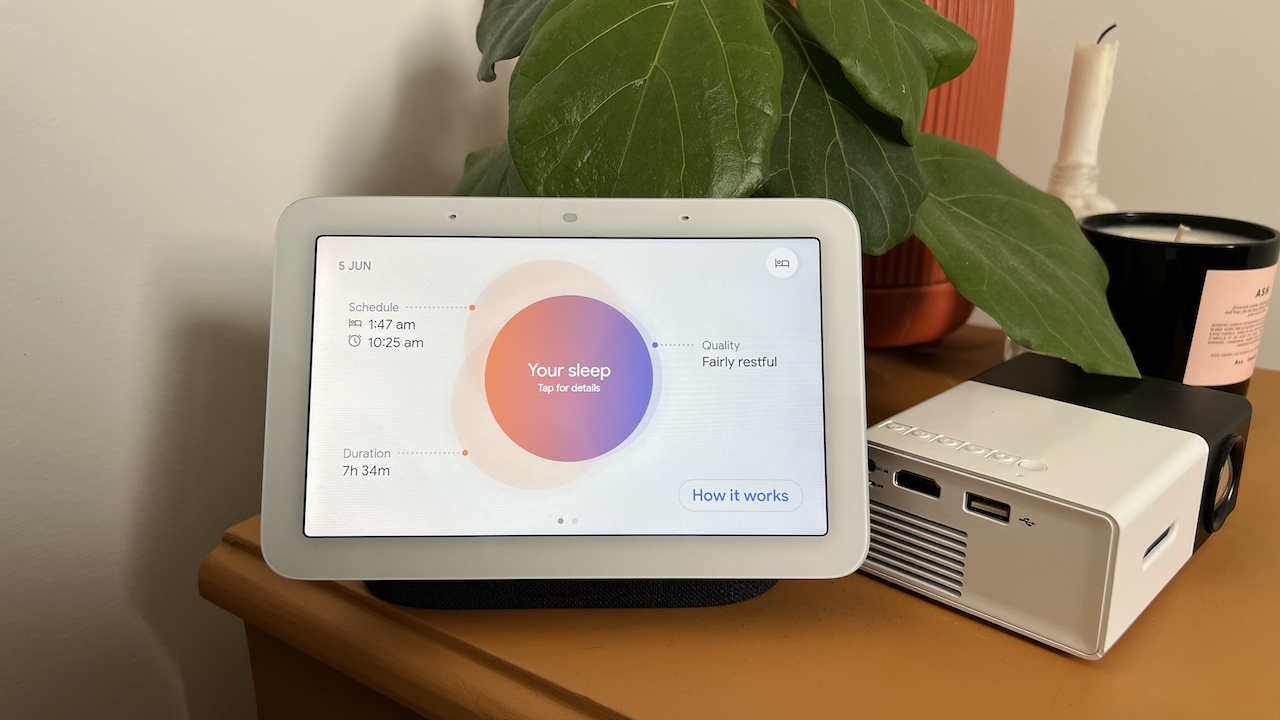
The Google Nest Hub doesn’t offer anything to help with your sleep, like the SleepHub does. But it does offer diagnostics. Which brings me to…
There’s no app/diagnostic info
The SleepHub has absolutely no sleep diagnostics. In fact, there’s not even an app or a menu that explores anything present in the Google Nest Hub. I don’t know how much sleep I got and I have no way of knowing if I was restless or that I coughed. It also lacks an always-on clock, which I feel the SleepHub could absolutely do with, considering the hub screen itself is so big.
It purely plays sounds.
Why not just use a rain sounds playlist from Spotify?
I asked the same question, actually. A few reasons having a separate device is beneficial here, the first is the quality of the sound. The SleepHub speakers are great for what they are. The rain/train/ocean/etc isn’t muffled like it is from your phone and having speakers rids the need to sleep with earbuds corked in your ears or even an over-head pair of headphones preventing any sort of movement.
Wtf, SleepHub
Wednesday morning I woke at 5.30 am, left home at 6.20 am and returned at 12.05 am. Walking through the door I could hear a tune in the distance. Turns out, it was the SleepHub alarm.
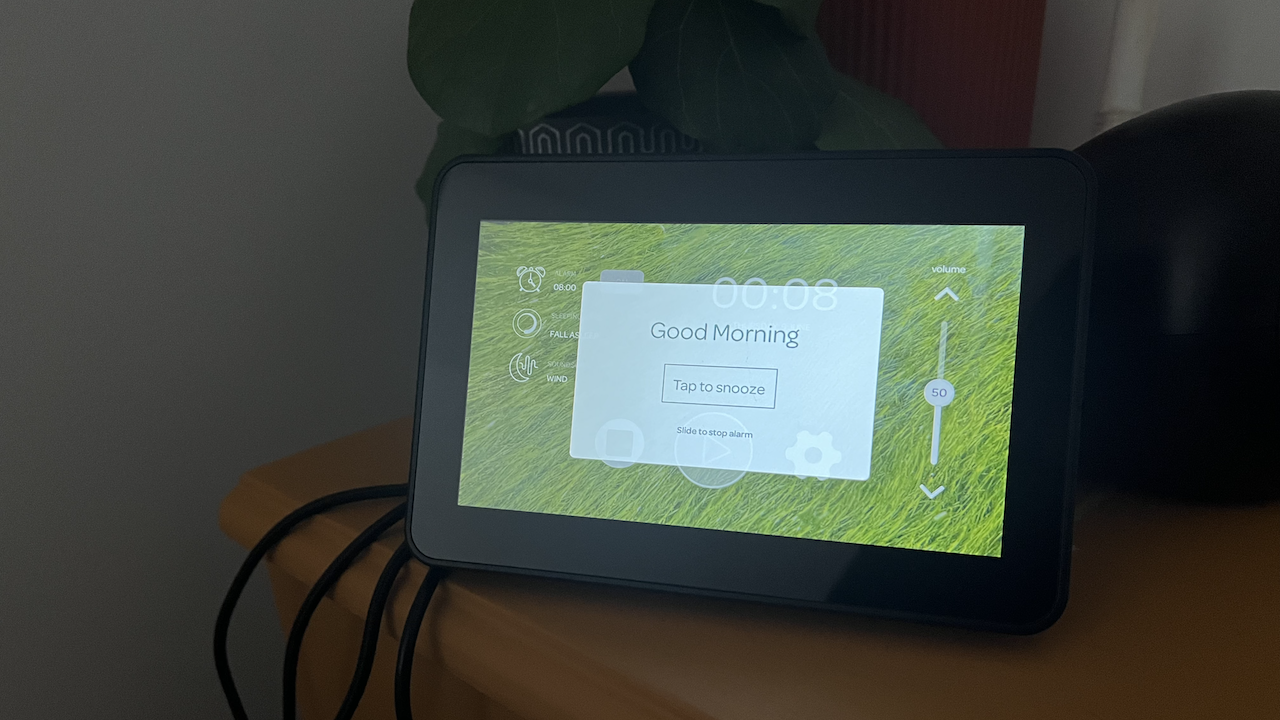
It had been just shy of 18 hours since I had been home. I must have had an alarm on that went off after I left. Judging from the text in the background of the alarm notification, it went off at 8 am. The alarm therefore went off for 16 hours, without automatically stopping. Surely you give up after 1 hour, or at least 6. Ridiculous that even after 12 hours, it was still going off. This is another example of how the device would benefit from being ‘smarter’.
The verdict
Once I got the hang of sleeping with a sound, and a sound that I could tolerate, falling asleep was definitely easier. But I also was actively laying there not touching my phone. I also didn’t have any extra stress this week keeping me up. I didn’t get any 8-hour sleeps in, but I can report that I felt a lot less…burdened? Perhaps that’s the right word to use. I didn’t feel as exhausted when I woke up. Although I didn’t get a lot of sleep, I still got a decent sleep.
There’s no doubt the SleepHub needs to be smarter. Sleep analysis and diagnostics similar to the Google Nest Hub would be a start. It would also be great to have the device sync to an app, with perhaps a similar idea to that of Calm. Something, anything. The tech is right there for the taking and the SleepHub is a great idea.
Why am I hesitant to recommend it?
Because if you’re anything like me, you’ve tried everything to get a good night’s sleep. One that’s more than an average of five hours each night. I would hate for this review to come across the eyes of someone in a similar position and for them to think the SleepHub will change their life. It won’t change everyone’s life, but I can see it working for a lot of people that need something to help them zone out and drift away.
For the person who wants to improve their sleep, or drift away to soothing sounds that help control your breathing. Someone that doesn’t have pre-existing issues with insomnia or other sleep disorders, this will be a fabulous device. For someone like me – I’m going to have to say seek medical advice on this one. It’s not a gimmick, it does help you get a better night’s sleep. But the SleepHub shouldn’t be used in lieu of medical treatment. Perhaps it was my own fault for putting that responsibility on a piece of tech.
Where can you buy the SleepHub?
The SleepHub is usually RRP $1,495 but is currently on sale from:
